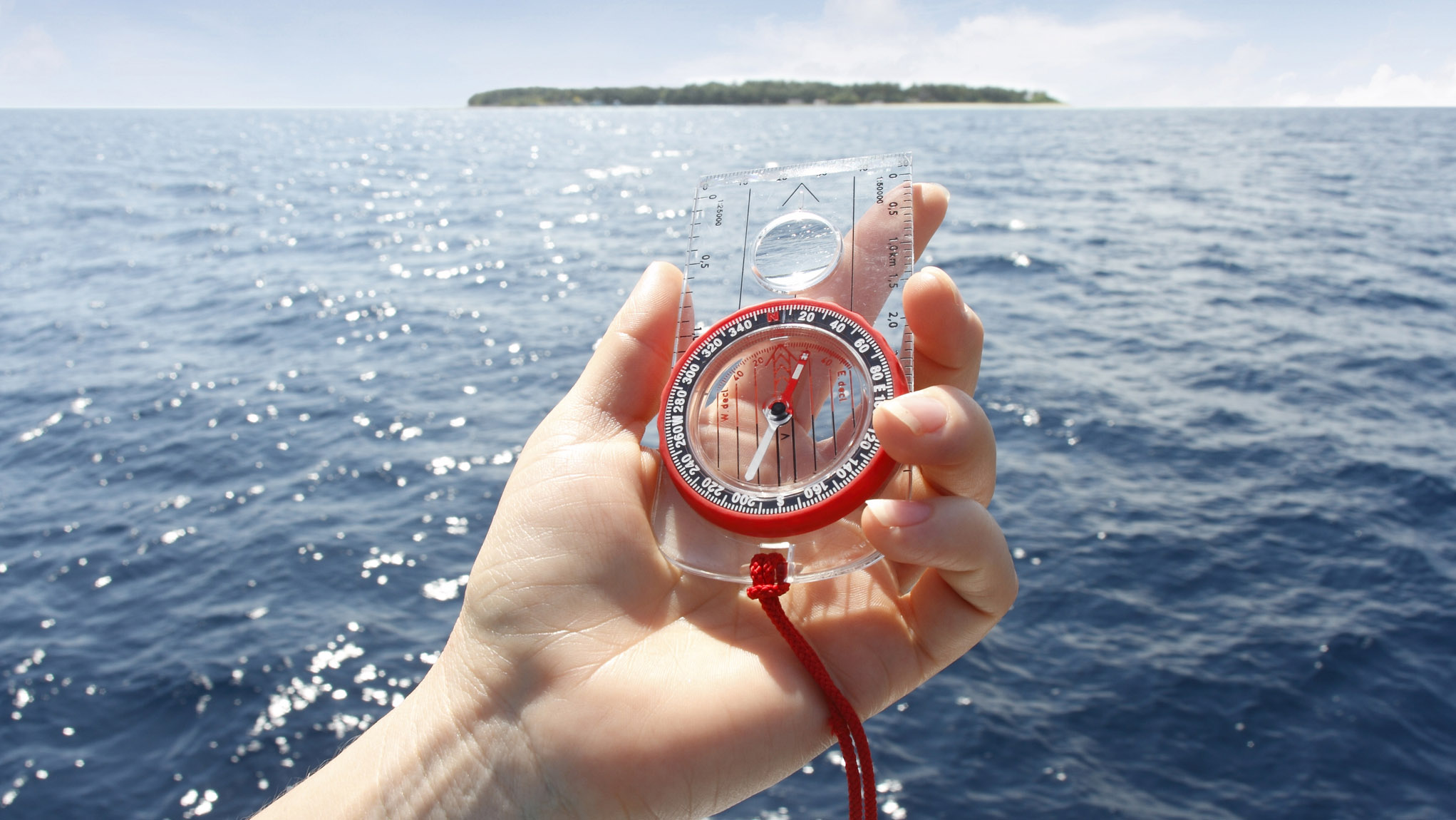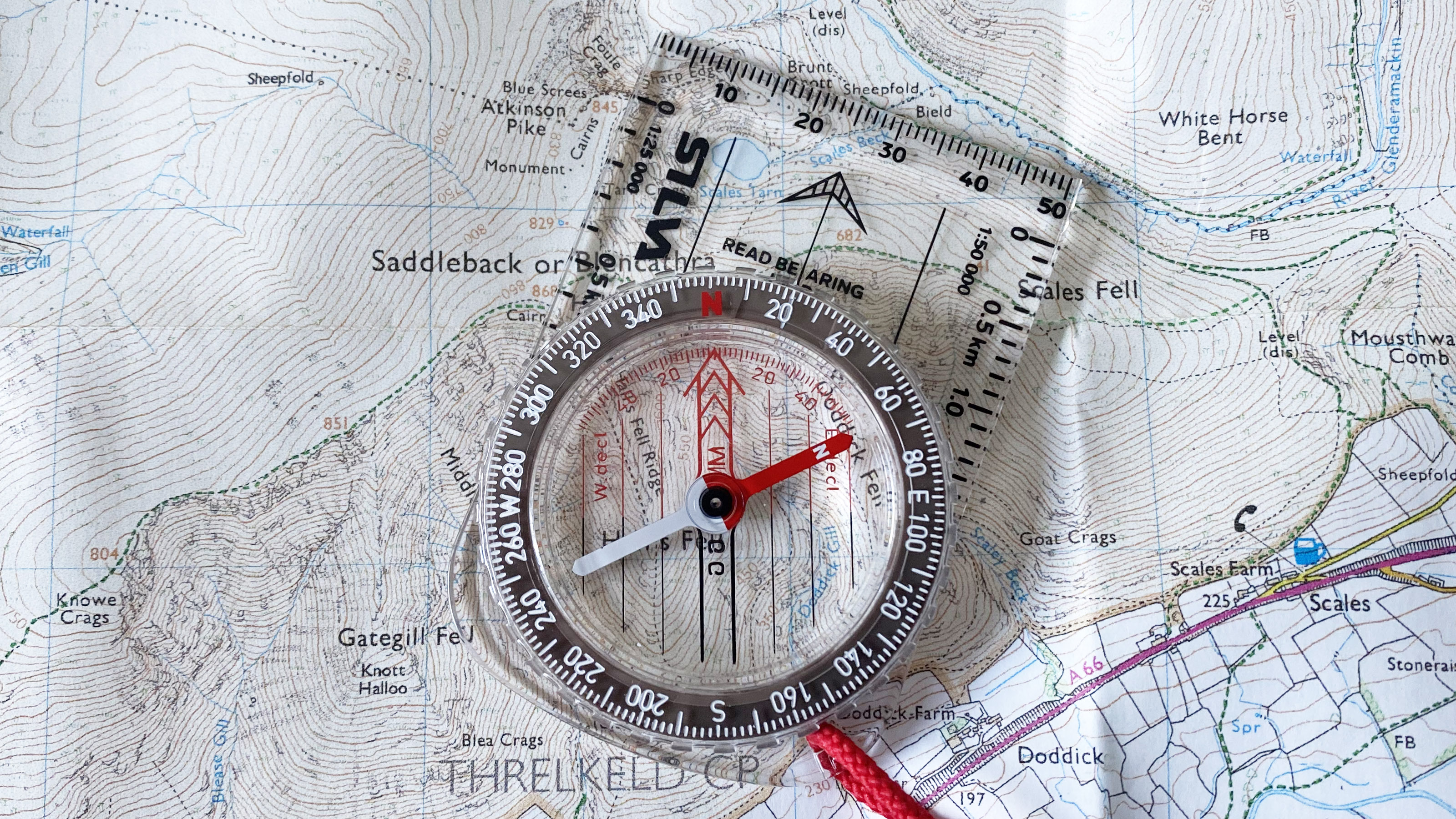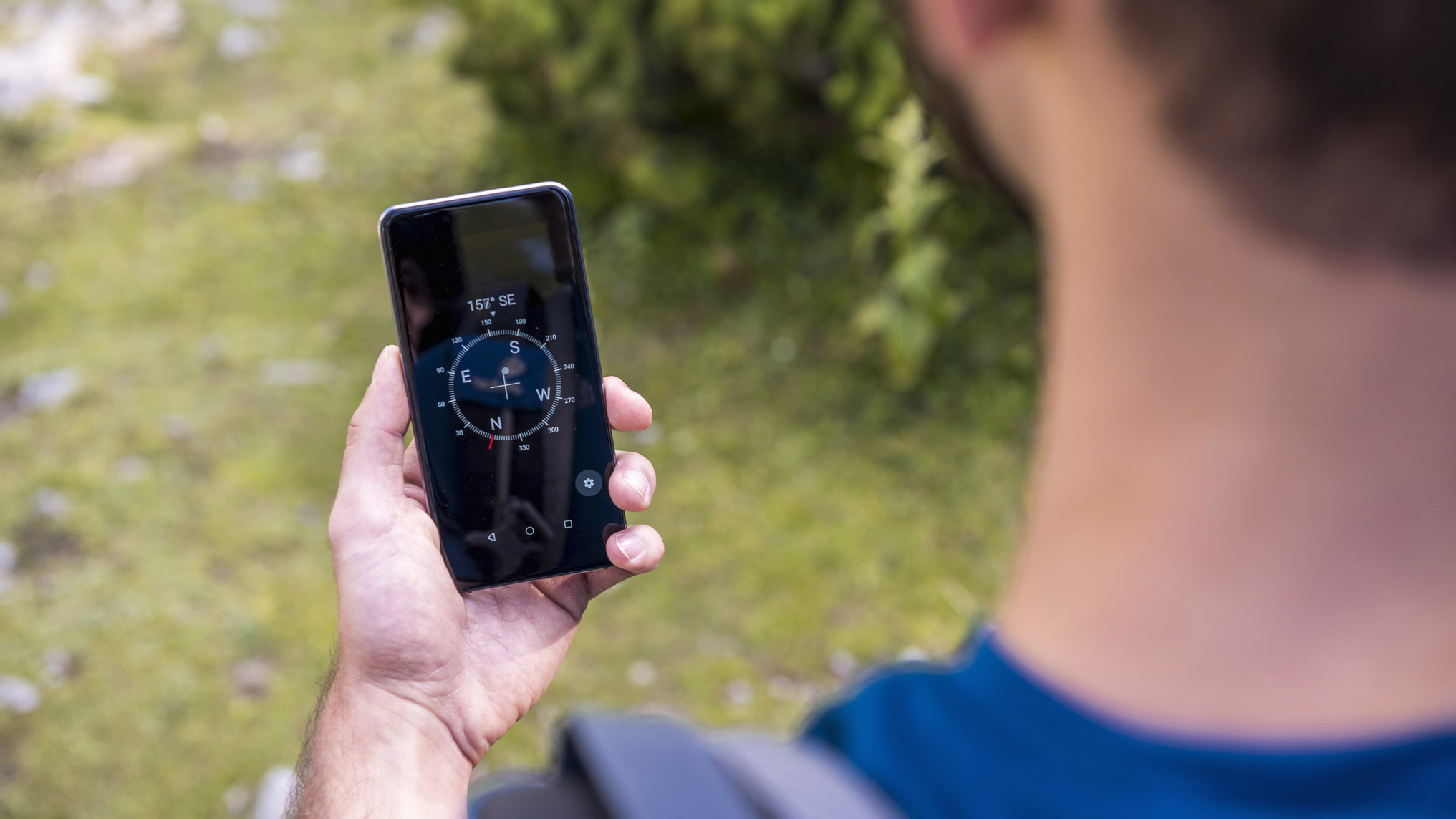Types of compass and how to choose the right navigational tool for your outdoor adventures
We take a look at different types of compass and consider which are best suited to activities like trail running, day hikes and longer treks

Navigating with a map and compass is a not only an essential skill, it's also very satisfying. In the modern age of GPS units, sports watches and navigation apps, many hikers are tempted to leave the compass at home. We think this is a mistake, as the best compasses and the ability to use them give you a safety net should anything go wrong with your devices. However, with quite a few different kinds of compass out there, which is best for outdoor adventures?
A good compass tells you what direction you are travelling in, usually with a needle that points north and, when combined with a proper topographical map, can help you take a bearing and head in the right direction in poor visibility.
There are broadly two families of compass, magnetic compasses and non-magnetic compasses, and both deserve a place in your hiking backpack. This is easily achieved, as you probably already carry at least one with you everywhere you go...
We asked our navigation expert to detail the different types of compass and their uses.
Types of compass
There are a range of magnetic and non-magnetic compass types.
Magnetic compasses comprise a magnetic element which aligns itself with the Earth's magnetic field. Arguably the best type of compass for outdoor adventure is a base plate compass, a type of magnetic compass. It features a magnetic, north-facing needle that's free to rotate in a circular chamber filled with liquid and a bezel, which displays all four points of the compass and a 360 degree scale.
Here are two other common varieties of magnetic compass:
Advnture Newsletter
All the latest inspiration, tips and guides to help you plan your next Advnture!
- Thumb compass – ideal for trail runners thanks to low weight and size
- Solid state compass – uses magnetic field sensors to feed into a microprocessor
The most common form of non-magnetic compass is a GPS compass, which use GPS data to point in the right direction.
Other non-magnetic compasses include gyro compasses and astrocompasses.
Meet the expert

Alex is a qualified UK Mountain Leader and keen mountaineer who enjoys navigating both with traditional tools and with digital platforms. He always carries two compasses on his adventures.
Today's best deals
Magnetic compasses
Magnetic compasses comprise a magnetic element (such as a needle or card) which aligns itself with the Earth’s magnetic field in order to point north. However, there are different varieties of north: true north, grid north and magnetic north. True north is the imaginary line that runs from your position directly over the North Pole. Grid north arises from the vertical lines that make up the squares on a topographical map. Magnetic north is what magnetic compasses use and its exact location gradually changes with the Earth’s magnetic field and, for precise navigation, it is useful to know how to adjust for magnetic declination.
Base plate compass

Knowing how to use a compass, particularly a base plate compass, is an essential hiking skill. This is your classic hiker’s compass and is ideal for any kind of ramble or trek, from short adventures to multi-day backpacking adventures. It can be worn around the neck or slipped into your best waterproof jacket pocket or best daypack when you're done. It’s made of transparent plastic and comprises a magnetic, north-facing needle that is free to rotate in a circular chamber filled with liquid.
In a circle around the chamber is the bezel, which displays all four points of the compass and a 360 degree scale. The bezel can be used to take a bearing between two points or landmarks on a map. This is handy when there’s poor visibility and you know where you are and where you want to be but not in which direction to go.
Other features on a base plate compass are the distance scales along the edges, which can be used to calculate distance on a map and many include a magnifier for close study of features on the map.

Thumb compass
A thumb compass is a smaller and simpler tool than a base plate compass and is ideal for trail runners or for hikers on familiar trails. As its name suggests, it attaches to the users’ thumb and takes up very little room in a hydration pack (see our buying guide for the best hydration pack). While not as sophisticated as a base plate compass, it is useful for quickly orientating yourself to a map.
Solid state compass
The solid state compass is increasingly popular with sea-going vessels and is present in digital clocks, mobile phones and tablets. They use magnetic field sensors to feed into a microprocessor that displays data about the device's orientation.
Other magnetic compasses
Card compasses are used on boats and employ a fixed needle and a compass card mounted in fluid, which rotates according to orientation. A prismatic compass is a sophisticated device that comprises a glass prism or lens that allows the user to read required bearings while seeing distant objects.
Non-magnetic compasses

There are places where a magnetic compass simply won’t hack it. The magnetic quality of certain rock types can play havoc with a traditional compass needle, while non-magnetic compasses usually find true north, rather than magnetic north, so are in theory that bit more accurate.
GPS compass
In this day and age, most hikers carry a GPS compass in their smartphone or on a separate GPS device (see our list of the best navigation apps). Reliability and the fact they remove human error are obvious advantages. Many apps also display things like exact coordinates and elevation too. The main disadvantage is that there’s always the possibility of running out of battery. It’s worth noting that when your phone’s location services are turned off, its compass doesn’t use GPS but instead becomes a solid-state compass and orientates to magnetic north rather than true north.

Other non-magnetic compasses
Large ships use gyro compasses: rapidly spinning discs that use the law of conservation of angular momentum and the rotation of the Earth on its axis to determine true north. Finally, an astrocompass uses the direction of celestial bodies, triangulated with times and position data, to determine true north. Astrocompasses come into their own around the poles, when magnetic compasses go haywire and gyro compasses stop working. You too can navigate by the stars, if you know how to read the night sky.
Alex is a freelance adventure writer and mountain leader with an insatiable passion for the mountains. A Cumbrian born and bred, his native English Lake District has a special place in his heart, though he is at least equally happy in North Wales, the Scottish Highlands or the European Alps. Through his hiking, mountaineering, climbing and trail running adventures, Alex aims to inspire others to get outdoors. He's the former President of the London Mountaineering Club, is training to become a winter mountain leader, looking to finally finish bagging all the Wainwright fells of the Lake District and is always keen to head to the 4,000-meter peaks of the Alps. www.alexfoxfield.com

